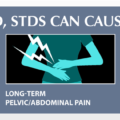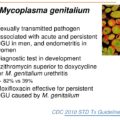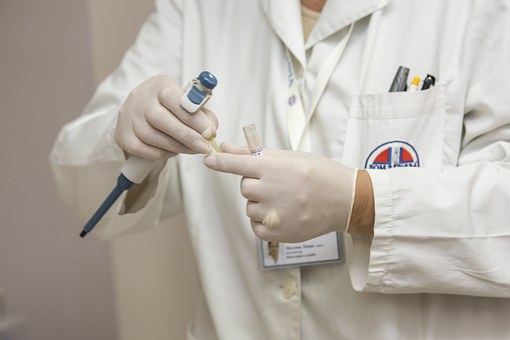The term STD refers to a group of diseases transmitted through sexual activity (Oral sex, vaginal sex and anal sex). it is also called VD. VD is an abbreviation which stands for Venereal Diseases, The term venereal is derived from the Latin word venereus which relates to sexual intercourse or desire, linked with the Roman goddess Venus. Venereal Diseases are also known as sexually transmitted diseases or STDs.
More than 30 different bacteria, viruses and parasites are known to be transmitted through sexual contact. Eight of these pathogens are linked to the greatest incidence of sexually transmitted disease. Of these 8 infections, 4 are currently curable: syphilis, gonorrhoea, chlamydia and trichomoniasis. The other 4 are viral infections which are incurable: hepatitis B, herpes simplex virus (HSV or herpes), HIV, and human papillomavirus (HPV). Symptoms or disease due to the incurable viral infections can be reduced or modified through treatment.
STIs are spread predominantly by sexual contact, including vaginal, anal and oral sex. Some STIs can also be spread through non-sexual means such as via blood or blood products. Many STIs—including syphilis, hepatitis B, HIV, chlamydia, gonorrhoea, herpes, and HPV—can also be transmitted from mother to child during pregnancy and childbirth.
A person can have an STI without having obvious symptoms of disease. Common symptoms of STIs include vaginal discharge, urethral discharge or burning in men, genital ulcers, and abdominal pain.
What are the Common Signs and Symptoms of STD (VD)
- Vaginal discharge or penile discharge (may be thick, cloudy or bloody)
- Painful bowel movements.
- Ulcers on or around the genitals
- Painful, swollen testicles.
- Pelvic pain mostly in women.
- Pain or burning sensation when urinating.
- Unusually heavy menstrual bleeding or bleeding between periods.
- Anal itching.
Can I have STD without Having SEX
Yes there are several VD disease that can be transmitted without sex they include :
- HIV : From blood transfusion or infected needle
- Herpes Virus : from grandma kiss at Christmas
- Human Papilloma Virus (HPV) : From hand-to-genital contact
- Trichomoniasis: From towels, bathrooms and toilets
Scope of the STD Problem
STIs have a profound impact on sexual and reproductive health worldwide.More than 1 million STIs are acquired every day. In 2016, WHO estimated 376 million new infections with 1 of 4 STIs: chlamydia (127 million), gonorrhoea (87 million), syphilis (6.3 million) and trichomoniasis (156 million). More than 500 million people are living with genital HSV (herpes) infection and an estimated 300 million women have an HPV infection, the primary cause of cervical cancer. An estimated 240 million people are living with chronic hepatitis B globally. Both HPV and hepatitis B infections are preventable with vaccination.
STIs can have serious consequences beyond the immediate impact of the infection itself.
- STIs like herpes and syphilis can increase the risk of HIV acquisition three-fold or more.
- Mother-to-child transmission of STIs can result in stillbirth, neonatal death, low-birth-weight and prematurity, sepsis, pneumonia, neonatal conjunctivitis, and congenital deformities. Approximately 1 million pregnant women were estimated to have active syphilis in 2016, resulting in over 350 000 adverse birth outcomes of which 200 000 occurred as stillbirth or neonatal death (5).
- HPV infection causes 570 000 cases of cervical cancer and over 300 000 cervical cancer deaths each year (6).
- STIs such as gonorrhoea and chlamydia are major causes of pelvic inflammatory disease (PID) and infertility in women.
Prevention of STIs
Counselling and behavioural approaches
Counselling and behavioural interventions offer primary prevention against STIs (including HIV), as well as against unintended pregnancies. These include:
- comprehensive sexuality education, STI and HIV pre- and post-test counselling;
- safer sex/risk-reduction counselling, condom promotion;
- STI interventions targeted to key populations, such as sex workers, men who have sex with men and people who inject drugs; and
- STI prevention education and counselling tailored to the needs of adolescents.
In addition, counselling can improve people’s ability to recognize the symptoms of STIs and increase the likelihood they will seek care or encourage a sexual partner to do so. Unfortunately, lack of public awareness, lack of training of health workers, and long-standing, widespread stigma around STIs remain barriers to greater and more effective use of these interventions.
Barrier methods
When used correctly and consistently, condoms offer one of the most effective methods of protection against STIs, including HIV. Female condoms are effective and safe,but are not used as widely by national programmes as male condoms.
Diagnosis of STD
Accurate diagnostic tests for STIs are widely used in high-income countries. These are especially useful for the diagnosis of asymptomatic infections. However, in low- and middle-income countries, diagnostic tests are largely unavailable. Where testing is available, it is often expensive and geographically inaccessible; and patients often need to wait a long time (or need to return) to receive results. As a result, follow up can be impeded and care or treatment can be incomplete.
The only inexpensive, rapid tests currently available for STIs are for syphilis and HIV. The rapid syphilis test is already in use in some resource-limited settings. A rapid dual HIV/syphilis test is not available whereby a person can be tested for HIV and syphilis from a single finger-stick and using a single testing cartridge. These tests are accurate, can provide results in 15 to 20 minutes, and are easy to use with minimal training. Rapid syphilis tests have been shown to increase the number of pregnant women tested for syphilis. However, increased efforts are still needed in most low- and middle-income countries to ensure that all pregnant women receive a syphilis test.
Several rapid tests for other STIs are under development and have the potential to improve STI diagnosis and treatment, especially in resource-limited settings.
Treatment of STIs
Effective treatment is currently available for several STIs.
- Three bacterial STIs (chlamydia, gonorrhoea and syphilis) and one parasitic STI (trichomoniasis) are generally curable with existing, effective single-dose regimens of antibiotics.
- For herpes and HIV, the most effective medications available are antivirals that can modulate the course of the disease, though they cannot cure the disease.
- For hepatitis B, antiviral medications can help to fight the virus and slow damage to the liver.
Antimicrobial resistance (AMR) of STIs—in particular gonorrhoea—to antibiotics has increased rapidly in recent years and has reduced treatment options. Current Gonococcal AMR Surveillance Programme (GASP) have shown high rates of quinolone resistance, increasing azithromycin resistance and emerging resistance of extended-spectrum cephalosporins, last-line treatment. The emergence of decreased susceptibility of gonorrhoea to extended-spectrum cephalosporins together with AMR already shown to penicillins, sulphonamides, tetracyclines, quinolones and macrolides make gonorrhoea a multidrug-resistant organism. AMR for other STIs, though less common, also exists, making prevention and prompt treatment critical (7).
Vaccines and other biomedical interventions
Safe and highly effective vaccines are available for 2 STIs: hepatitis B and HPV. These vaccines have represented major advances in STI prevention. The vaccine against hepatitis B is included in infant immunization programmes in 95% of countries and prevents millions of deaths from chronic liver disease and cancer annually.
As of October 2018, the HPV vaccine is available as part of routine immunization programmes in 85 countries, most of them high- and middle-income. HPV vaccination could prevent the deaths of millions of women over the next decade in low- and middle-income countries, where most cases of cervical cancer occur, if high (>80%) vaccination coverage of young women (ages 11-15) can be achieved.
Research to develop vaccines against herpes and HIV is advanced, with several vaccine candidates in early clinical development. Research into vaccines for chlamydia, gonorrhoea, syphilis and trichomoniasis is in earlier stages of development.
Other biomedical interventions to prevent some STIs include adult male circumcision and microbicides.
- Male circumcision reduces the risk of heterosexually acquired HIV infection in men by approximately 60% and provides some protection against other STIs, such as herpes and HPV.
- Tenofovir gel, when used as a vaginal microbicide, has had mixed results in terms of the ability to prevent HIV acquisition, but has shown some effectiveness against HSV-2. READ: Blue Wafflé Disease: WebMD Separates Facts From Fiction

 What is STD (VD)?
What is STD (VD)?


